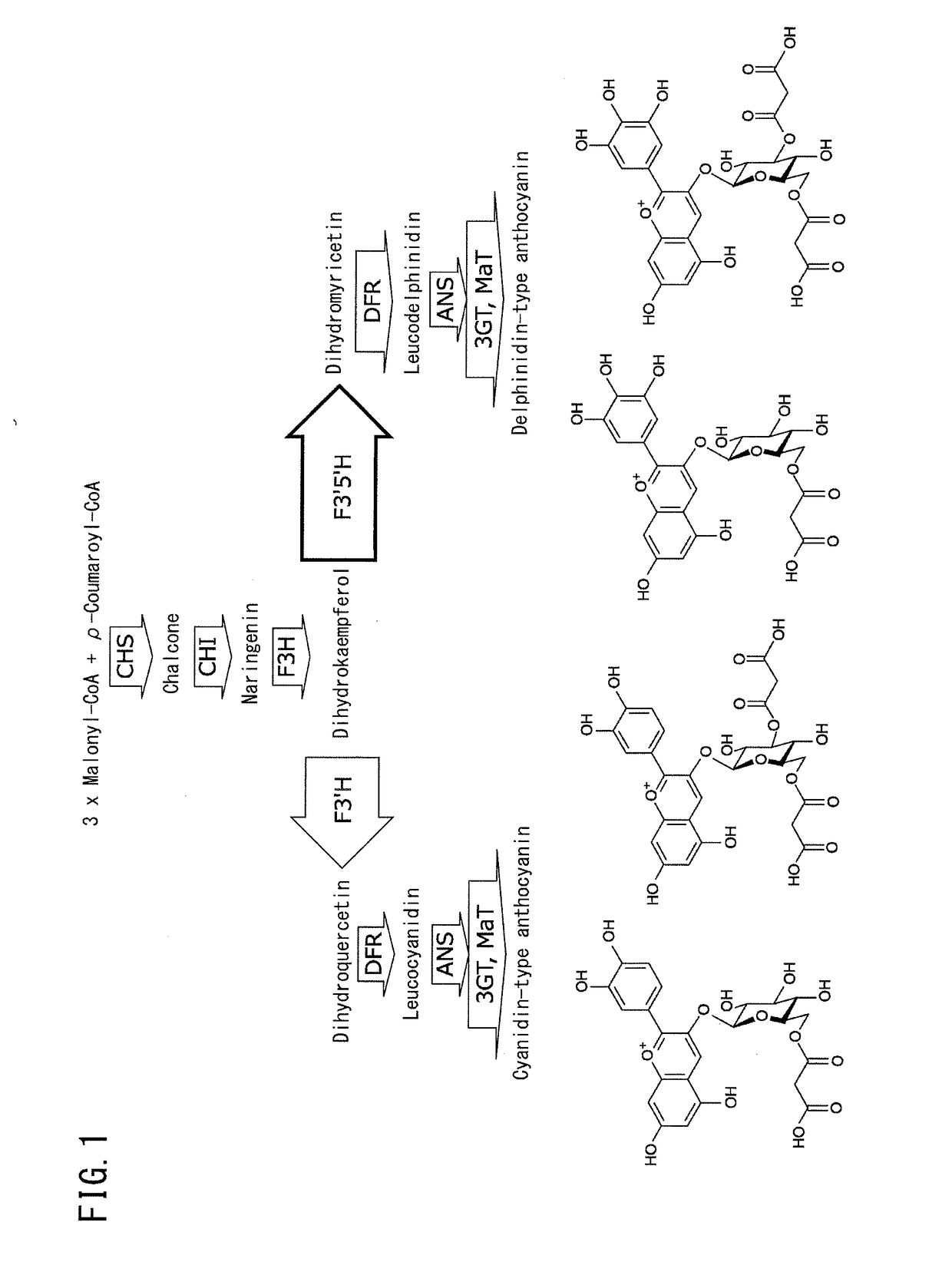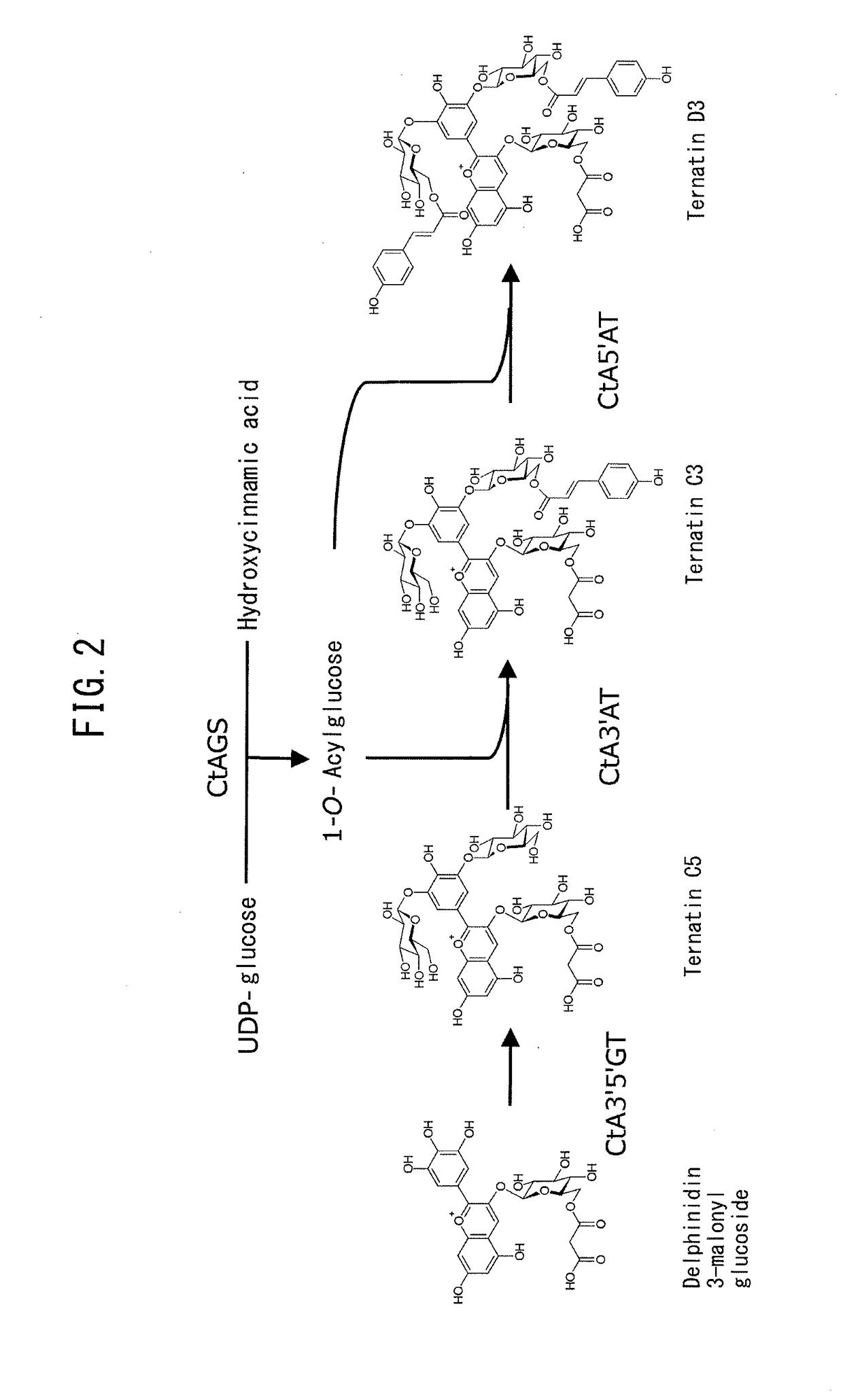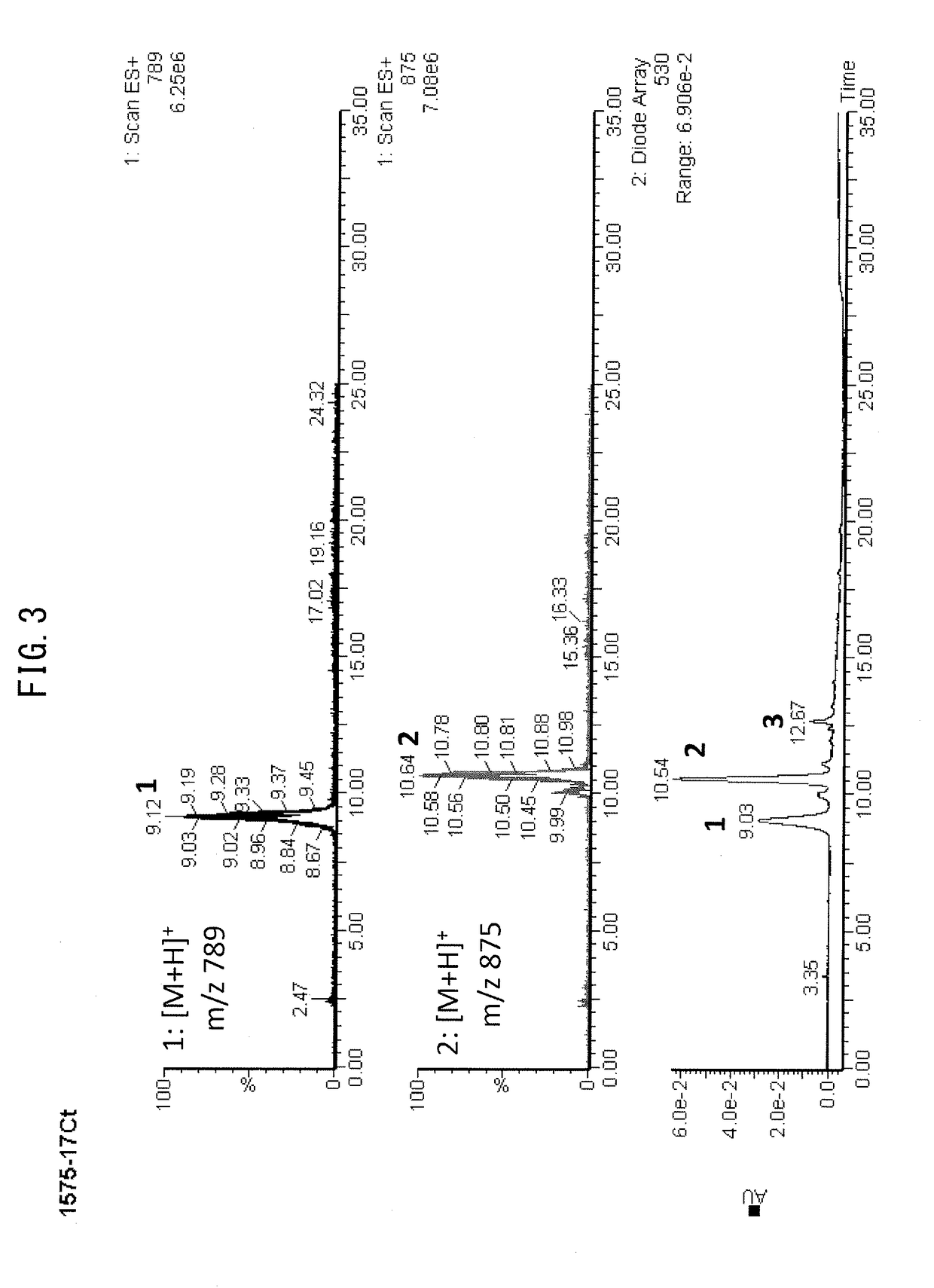Creation of chrysanthemum with blue flower color
a technology of chrysanthemum and blue flower color, which is applied in the field of expression cassettes, can solve the problems of not being able to create blue ornamental plants having violet, not being able to create blue transformationants with true blue, and being unable to create blue ornamental plants with violet. achieve the effect of combining blue flower color traits
- Summary
- Abstract
- Description
- Claims
- Application Information
AI Technical Summary
Benefits of technology
Problems solved by technology
Method used
Image
Examples
example 1
ion of pB423 into Chrysanthemum Variety “Taipei” (Coexpression of Clitoria A3′5′GT Gene Under the Control of Chrysanthemum F3H Promoter 1k and Agrobacterium Nos Terminator and Campanula F3′5′H Gene Under the Control of Chrysanthemum F3H Promoter 1k and Arabidopsis HSP Terminator)
[1] Vector Assembly
[0120]PCR was conducted using pBluescript SK-gF3H9 (Kanno et al. (2001), J. Japan. Soc. Hort. Sci. 70 (vol. 2) 193) as template, and HANS-F3Hpro1k-Fd
(5′-CCAAGCTTGGCGCGCCGCGGCCGCATTTAAATTTACAAAACCATGTGCAAGAATG-3′;
underline indicates the sequence annealing with DNA containing the F3H promoter region; SEQ ID NO: 5) and SNM-F3Hpro-Rv
(5′-ACTAGTGCTAGCACGCGTTTTTTATTTTTTCTTCACACACTTG-3′;
underline indicates the sequence annealing with DNA containing the F3H promoter region; SEQ ID NO: 6) as primers, to amplify a DNA fragment containing CmF3H promoter 1k having HindIII, AscI, NotI and SwaI restriction enzyme sites added to the 5′-end and SpeI and NheI restriction enzyme sites added to the 3′-end, an...
example 2
ion of pB423 into Chrysanthemum Variety “Sei Arabella” (Line No. T34) (Coexpression of Clitoria A3′5′GT Gene Under the Control of Chrysanthemum F3H Promoter 1k and Agrobacterium Nos Terminator and Campanula F3′5′H Gene Under the Control of Chrysanthemum F3H Promoter 1k and Arabidopsis HSP Terminator)
[1] Vector Assembly
[0132]Plasmid pB423 (pBCtA3′5′GT+CamF3′5′H) was created according to Example 1.
[2] Obtaining Transformants and Measuring Flower Color
[0133]A salmon-pink colored medium-sized decorative chrysanthemum variety “Sei Arabella” (Inochio Seikoen; Line No. T34) was transformed using pB423-transferred Agrobacterium EHA105 (provided by Dr. Elizabeth E. Hood), and 47 transformant lines were obtained. As a result of color measurement with a spectroscopic colorimeter (CD100, Yokogawa Electric Corp.) and an RHS color chart, alteration of flower color toward blue was confirmed in 34 lines (72%). Accumulation of delphinidin 3-(6″-malonyl)glucoside-3′,5′-diglucoside (ternatin C5) and d...
example 3
ion of pB423 into Chrysanthemum Line “T37” (Coexpression of Clitoria A3′5′GT Gene Under the Control of Chrysanthemum F3H Promoter 1k and Agrobacterium Nos Terminator and Campanula F3′5′H Gene Under the Control of Chrysanthemum F3H Promoter 1k and Arabidopsis HSP Terminator)
[1] Vector Assembly
[0134]Plasmid pB423 (pBCtA3′5′GT+CamF3′5′H) was created according to Example 1.
[2] Obtaining Transformants and Measuring Flower Color
[0135]A pink-colored small-sized pompon chrysanthemum line “T37” (sampled breeding line provided by Inochio Seikoen) was transformed using pB423-transferred Agrobacterium EHA105 (provided by Dr. Elizabeth E. Hood), and 97 transformant lines were obtained. As a result of color measurement with a spectroscopic colorimeter (CD100, Yokogawa Electric Corp.) and an RHS color chart, alteration of flower color toward blue was confirmed in 58 lines (60%). Accumulation of delphinidin 3-(6″-malonyl)glucoside-3′,5′-diglucoside (ternatin C5) and delphinidin 3,3′,5′-triglucoside...
PUM
 Login to View More
Login to View More Abstract
Description
Claims
Application Information
 Login to View More
Login to View More - R&D
- Intellectual Property
- Life Sciences
- Materials
- Tech Scout
- Unparalleled Data Quality
- Higher Quality Content
- 60% Fewer Hallucinations
Browse by: Latest US Patents, China's latest patents, Technical Efficacy Thesaurus, Application Domain, Technology Topic, Popular Technical Reports.
© 2025 PatSnap. All rights reserved.Legal|Privacy policy|Modern Slavery Act Transparency Statement|Sitemap|About US| Contact US: help@patsnap.com



